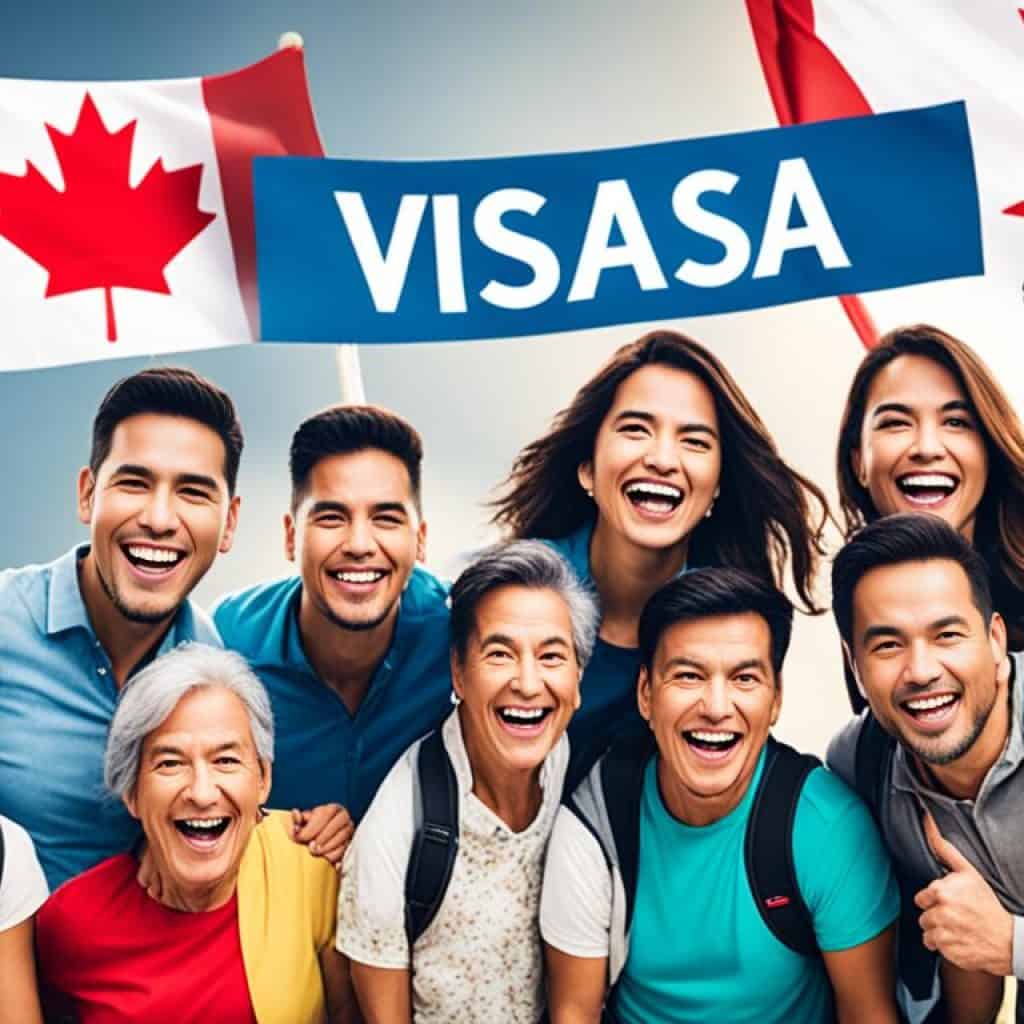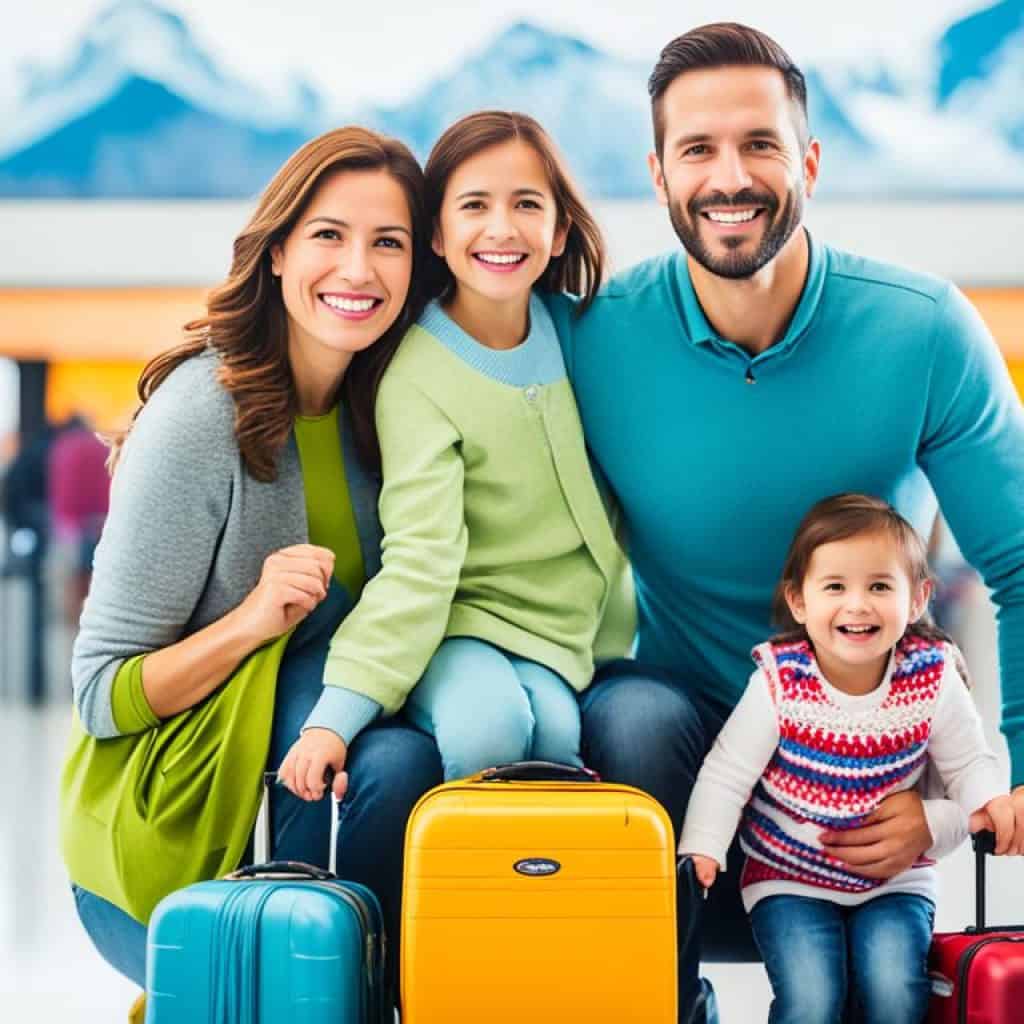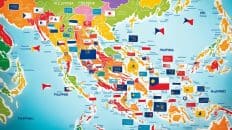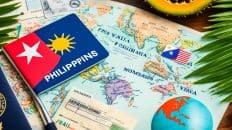Are you a Filipino who dreams of seeing Canada’s beauty? Do you wonder about needing a visa or if you can go without one? Learn about the travel needs, who doesn’t need a visa, and the visa process for Filipinos. We’ll cover passport needs, entry rules, and immigration tips. Get ready for a smooth trip to Canada!
Key Takeaways
- Filipinos may experience Canada without a visa under some conditions.
- Canadian citizens and permanent residents have different entry rules from other visitors.
- Visa-exempt travelers must get an Electronic Travel Authorization (eTA) before their flight to Canada.
- Those needing a visa should apply at a Canadian embassy or consulate.
- Workers, students, and family visitors to Canada face special entry needs.
Canadian Citizens
As a Canadian citizen, you have a special advantage when you travel to Canada. You can use a valid Canadian passport. This is true for both dual citizens and those with only Canadian citizenship. Your passport makes entering Canada easy.
If you’re both Canadian and American, you have more options. You can enter Canada with either a valid Canadian or U.S. passport. This choice lets you pick the best document for your needs. It makes your trip smoother.
Having Canadian citizenship comes with great benefits. You can enjoy these whether you’re traveling for fun, visiting family, or chasing career goals. Your Canadian passport is your reliable partner for any journey.
Canadian Permanent Residents
If you’re a Canadian permanent resident, you need the right documents to travel to Canada. A permanent resident card or permanent resident travel document is a must. These ensure your journey is smooth.
The permanent resident card proves you live in Canada permanently. It’s a small card with your name, photo, and a unique ID. You’ll need it for air travel into Canada.
Without a valid card, you can get a permanent resident travel document. This is for those outside Canada without a valid card. It helps you return to Canada easily.
Before traveling, check if your card or document is valid. If not, you may face travel delays or problems.
To get a card or travel document, contact Immigration, Refugees and Citizenship Canada (IRCC). They’ll tell you what you need to do and what’s required.
Having the right documents makes your travel to Canada smooth. It ensures you can return without any trouble.
U.S. Citizens
If you’re a U.S. citizen planning to travel to Canada, it’s important to know the entry requirements and documents you need for a smooth journey. One essential document to carry is a valid U.S. passport. This helps make your journey easier.
Your U.S. passport proves your citizenship and identity when traveling to Canada. There’s no need for a visa to enter.
Ensure your U.S. passport is valid throughout your stay in Canada. It should be valid beyond your planned departure date to avoid complications.
Note: Check your U.S. passport’s expiration date before your trip. Renew it if necessary. Having a valid passport that meets Canada’s entry requirements is crucial.
As a U.S. citizen, you can easily enter Canada with a U.S. passport. Keep it safe while traveling. Also, carry a copy as a backup.
Here are a few important reminders for your trip:
- Keep your U.S. passport valid
- Check the expiration date and renew if necessary
- Carry your U.S. passport with you at all times
- Make a photocopy of your passport for backup
- Follow any additional instructions from the Canadian authorities
By following the entry requirements and having a valid U.S. passport, you’ll enjoy your trip to Canada without any problems.
Lawful Permanent Residents of the U.S.
Lawful permanent residents of the United States, also known as green card holders, must meet some travel requirements for Canada. They must have a valid passport from their home country. This passport proves their identity and citizenship for international travel.
Green card holders also need to carry their valid green card. This card shows they’re legally living in the U.S. It’s needed for re-entry into the United States after visiting Canada.
It’s crucial to make sure your passport is valid for your entire stay in Canada. Also, ensure your green card is current and not expired. Not doing so may cause problems at the border or even deny you entry into Canada.
Before traveling, check Canada’s entry rules and requirements. Doing this makes your trip smoother and avoids any problems.
For more details on U.S. lawful permanent residents traveling to Canada, visit the official Government of Canada website.
Benefits of Visa-Free Access for Lawful Permanent Residents
The visa-free access benefits U.S. green card holders. It makes trips to Canada easy without needing a visa. You can travel for fun, work, or to see family without the hassle of getting a visa.
Traveling to Canada as a lawful permanent resident lets you see its beautiful landscapes, exciting cities, and unique culture.
This visa-free entry strengthens U.S.-Canada relations. It boosts tourism and business. It also values the status of U.S. permanent residents and acknowledges their contributions.
Using this visa-free access lets permanent residents enjoy Canada’s beauty. It helps them connect more with the neighboring country.

Travel Tips for Lawful Permanent Residents Visiting Canada
If you’re a lawful permanent resident of the U.S. planning a trip to Canada, keep these tips in mind:
- Ensure that your passport is valid for the entire duration of your stay in Canada.
- Check the validity of your green card and make sure it will not expire during your trip.
- Familiarize yourself with the entry regulations and requirements set by the Canadian government.
- Obtain relevant travel insurance to protect yourself from unexpected medical expenses while in Canada.
- Research and respect the local laws and customs of the places you plan to visit.
Following these tips ensures a smooth and fun journey to Canada.
Visa-Exempt (eTA Eligible) Travelers
Travelers from certain visa-exempt countries can go to Canada without a visa. Still, they must get an eTA before flying, unless they come by land or sea.
The eTA is linked to your passport and allows multiple entries into Canada for fun, work, or transit. This system also keeps visitors and Canada safe.
Before traveling, make sure your country qualifies for eTA. Some nationalities don’t need an eTA, so check to avoid travel issues.
Benefits of the eTA
The eTA has great advantages:
- Convenience: Getting an eTA beforehand makes entering Canada smooth and swift.
- Efficiency: The eTA process is faster than getting a visa, saving you time.
- Flexibility: With an eTA, visit Canada often within its validity for various reasons.
- Security: The eTA helps screen travelers early, ensuring everyone’s safety.
Exceptions to the eTA Requirement
Not all visa-exempt travelers need an eTA for air travel. There are exceptions. They include:
- Canadian citizens and dual citizens with a valid Canadian passport.
- U.S. citizens with a valid U.S. passport.
- Those coming to Canada by land or sea.
- Air crew and officials on official duties.
- Some visa-exempt nationals with a valid Canadian visa.
Check the official Canadian website or a Canadian embassy to know your eTA needs.
Understanding and following the eTA rules makes your trip to Canada worry-free.
| Key Points | Visa-exempt travelers | Electronic Travel Authorization (eTA) | eTA exemption |
|---|---|---|---|
| Definition | Citizens of visa-exempt countries | Digital travel authorization | Certain exceptions apply |
| Requirement | Obtain an eTA when traveling by air | Linked to the traveler’s passport | Not necessary in specific situations |
| Benefits | Convenience, efficiency, flexibility, security | Streamlined entry process | Save time and travel hassle-free |
| Exceptions | Canadian citizens, U.S. citizens, land or sea visitors | Air crew members, diplomatic representatives | Some visa-exempt citizens with a Canadian visa |
Visa-Required Travelers
Travelers from countries needing a visa for Canada must get one to enter. Follow the Canadian visa application process as per the embassy or consulate.
The visa process and requirements can change based on your nationality and visit reason. Make sure to check the Canadian authorities’ instructions and prepare your documents.
Applying for a Canadian Visa
When applying for a Canadian visa, you’ll need to provide several documents:
- A completed visa application form
- A valid passport with at least six months of validity remaining
- Proof of travel arrangements, such as flight itineraries and hotel reservations
- Evidence of sufficient financial resources for the trip
- A letter of invitation, if applicable
- Any additional supporting documents required by the embassy or consulate
Apply for your visa well before your trip to allow enough processing time. Processing times can vary, so always check for the latest guidelines from Canadian authorities.
Note: The visa process may include a fee that is non-refundable. Always verify the latest info on fees at the Canadian embassy or consulate’s official website.
After submitting your visa application, Canadian officials will review it. Providing accurate and complete info helps avoid delays or issues.
If approved, you’ll get your Canadian visa, which lets you enter and stay in Canada for your trip’s duration. Always follow visa conditions and immigration rules in Canada.
Even with a Canadian visa, entry isn’t guaranteed. At the Canadian port of entry, immigration officials will decide if you can enter the country.
Always carry your visa and supporting documents when entering Canada. Immigration officials may ask to see them.
Workers and Students
If you’re a worker or student planning to travel to Canada, you need to know the entry requirements. These include having a valid work or study permit, and a visitor visa or Electronic Travel Authorization (eTA) based on your nationality.
Workers need a work permit for their job and stay duration in Canada. This permit legally allows them to work there and is given out by Canadian authorities.
Students must get a study permit tailored to their course and school. This permit enables them to study and live in Canada during their course.
Workers and students might need a visitor visa or an eTA too, depending on where they’re from. A visitor visa is for those from countries not eligible for an eTA. The eTA is an online travel authorization for visa-exempt travelers.
To enter Canada smoothly, check the visa process and requirements for your permit or visa. Talk to the Canadian embassy or consulate for the latest, correct information.
As a student, I was excited about studying in Canada. I applied early for my study permit and visitor visa, following the Canadian embassy’s guidelines. The process was easy, letting me focus on my studies worry-free. – Sarah Smith, International Student
Benefits of having the right permits and visas:
- Legal authorization to work or study in Canada
- Access to a wide range of employment and educational opportunities
- Protection under Canadian labor laws and regulations
- Eligibility for social benefits and services
Implications of not having the right permits and visas:
- Risk of deportation and legal consequences
- Limited access to work or study opportunities
- Ineligibility for social benefits and services
- Difficulty in obtaining future visas or permits
Getting the right work and study permits, visitor visas, or eTAs is key for a great time in Canada, professionally and academically.
| Permit/Visa Type | Nationality | Requirements |
|---|---|---|
| Work Permit | Non-visa-exempt workers | – Valid job offer – Labour Market Impact Assessment (LMIA) – Other specific requirements depending on the type of work permit |
| Visa-exempt workers | – eTA – Valid job offer |
|
| Study Permit | Non-visa-exempt students | – Letter of acceptance from a designated learning institution – Proof of financial support – Other specific requirements depending on the type of study permit |
| Visa-exempt students | – eTA – Letter of acceptance from a designated learning institution |
|
| Visitor Visa | Visa-required travelers | – Passport valid for at least six months – Completed visa application form – Proof of financial means – Other supporting documents as required |
| eTA | Eligible visa-exempt travelers | – Valid passport – Online eTA application |
Visiting Your Children and Grandchildren in Canada
Do you want to see your loved ones in Canada? If you’re a parent or grandparent of someone in Canada, look into a super visa. It lets you stay with your kids or grandkids for up to 5 years each visit.
The super visa offers the ease of multiple entries. You can travel back and forth to Canada many times while it’s valid. This lets you extend your stay, go back home for a bit, and then return to Canada to make more amazing memories with your family.
This visa is great for keeping families together. Instead of short visits, you get longer ones. This means you can be there for big moments and special times with your family, even if they’re far away.
Learning about the immigration rules for the super visa is crucial. Although applying requires some work and specific documents, it’s worth it. You get to spend lots of quality time with your family in Canada.
“The super visa changed everything for me. No more worrying about visa renewals or short visits. Now, I can enjoy every moment with my kids and grandkids. It’s been amazing!”
– Maria Santos, Super Visa Holder
Visiting your family in Canada is very special. It builds strong family bonds. The super visa makes it easy with its long stays and freedom to travel.

Getting a super visa is your chance to create unforgettable memories in Canada with your loved ones.
Recent Updates and Changes
Recent changes made travel between the Philippines and Canada easier. This includes significant improvements in the entry process. It also addresses the backlog of visa applications.
The Electronic Travel Authorization (eTA) program has started. It makes travel smoother for eligible people.
This eTA program helps tackle the visa application backlog. It does this by making the entry quicker for travelers. It replaces old visa methods with a more efficient system online.
Canada’s recent changes show its dedication to making travel easier. These changes make using digital tools for travel authorizations better. They help both travelers and immigration authorities.
Canada is committed to a smooth entry process. The eTA program is a big step in improving visa-free travel. It makes coming from the Philippines and other countries simpler.
Benefits and Implications of Visa-Free Access
The Philippines to Canada visa-free access offers many benefits to travelers. It also has big implications for the immigration system. Let’s look into the advantages and effects of this travel ease.
Easier and Faster Entry for Travelers
Visa-free access lets Filipino travelers enter Canada easily and quickly. Without needing a visa, travelers skip the long processing times. They avoid a lot of paperwork and costs. This makes entering Canada smoother and maximizes their stay.
Reduced Visa Processing Times
The visa-free policy also cuts down visa processing times for other nations. By lessening the load from countries like the Philippines, more resources go to other visas. This results in quicker, more efficient processing for all travelers.
Improved Service for Visa-Required Travelers
This policy improves services for those needing a visa. With fewer applications from the Philippines, there’s more focus on enhancing service for visa-required travelers. It leads to a better entry experience for everyone, no matter their visa needs.
Economic Impact
Visa-free access boosts the economy too. It encourages more Filipino tourists to visit Canada. These travelers spend money, helping local businesses grow. This support benefits the hospitality, transportation, and retail sectors, creating jobs and economic growth.
Implications for the Immigration System
The visa-free policy affects the immigration system. It shifts the focus to processing other applications like study or work permits. With fewer visa applications from the Philippines, there’s more efficiency. This means better service for a variety of immigration needs.
Overall, visa-free access from the Philippines to Canada is great for travelers. It leads to easier entry, quicker processing, and boosts the economy. This policy not only helps travel but also strengthens the bond between the two countries.
Why the Philippines?
The Philippines now enjoys visa-free access to Canada, making it easier for their communities to connect. This decision reflects the significant Philippines diaspora in Canada. The Philippines is a leading country of birth for Canadian immigrants, hosting a vibrant Filipino community that enriches Canada’s culture and economy.
About 900,000 people in Canada have Filipino roots. They form one of the biggest immigrant groups in Canada. The visa-free access helps Filipino-Canadians visit family back home, strengthening family bonds. It makes travel simpler between the two countries.
Additionally, this move supports Canada’s Indo-Pacific Strategy. This strategy aims to build stronger relationships in the Indo-Pacific area, including the Philippines. It encourages trade, investment, and exchanges between the people of both nations.
“The Philippines’ diaspora in Canada and its strategic importance in the Indo-Pacific region have played a significant role in the decision to grant visa-free access.”
Canada’s visa-free program encourages more people to travel between Canada and the Philippines. It deepens cultural ties and boosts economic partnerships. The visa program supports tourism, business activities, and educational exchanges, benefiting both countries.
Indo-Pacific Strategy: Strengthening Regional Engagement
Canada’s Indo-Pacific Strategy seeks to enhance engagement with Asian and Pacific nations. It promotes peace, security, and economic growth through diplomacy and cultural cooperation.
The plan includes building stronger bonds with key countries like the Philippines, acknowledged for its influence and regional leadership. Visa-free travel is a key part of Canada’s effort to strengthen these ties. It shows Canada’s dedication to enhancing relations in the Indo-Pacific region.
Through visa-free access, the Philippines and Canada can enjoy closer relations. This involves considering the large Philippines diaspora, immigration patterns, and the broader Indo-Pacific Strategy. The program supports family reunions, cultural exchanges, and stronger bilateral ties. Both countries stand to gain from this arrangement.
Travel Tips and Precautions
Traveling from the Philippines to Canada requires safety awareness. You must know the risks, health needs, and local customs. Getting this knowledge will ensure your trip is both safe and enjoyable. Follow these guidelines to travel confidently:
1. Stay Informed About the Risk Level
Before leaving, keep up with the risk level in Canada. Check your embassy for travel advisories. Understand the risks to make good decisions.
2. Prioritize Safety and Security
Keep yourself and your things safe by being smart about security. Keep belongings secure and be aware of your surroundings. Avoid showing off wealth, travel in groups, and stay in lit, busy places.
3. Follow Health Requirements
Know the health rules for going from the Philippines to Canada. This means checking required vaccinations or tests. Also, getting travel insurance is a smart move for unexpected health costs.
4. Respect Local Laws and Culture
Learn about Canada’s laws and customs. Knowing social etiquette helps you fit in better. Respecting local ways leads to a more enjoyable visit.
“Traveling is not just about seeing new places; it’s about understanding and appreciating different cultures.”
5. Register with Your Embassy
Register with the Philippine embassy in Canada before you go. This keeps your government informed for safety. It’s easy to do online and adds security.
6. Stay Connected
Have a way to communicate during your trip. Save important numbers like emergency services. Also, tell a friend or family member your plans.
7. Follow Local Advice and Instructions
Listen to local safety and health tips. Following advice helps you stay safe. It also helps keep the community safe.
Being well-informed makes you a prepared traveler. These tips ensure a smooth journey from the Philippines to Canada.
| Travel Safety Measures | Risk Level | Health Requirements | Local Laws and Culture |
|---|---|---|---|
| Stay Informed | Check Risk Level | Follow Health Requirements | Respect Local Laws and Customs |
| Prioritize Safety and Security | Stay Updated on Advisories | Vaccinations and Tests | Research Laws and Customs |
| Follow Health Requirements | Practice Common Sense Safety | Travel Insurance | Understand Cultural Practices |
| Respect Local Laws and Culture | Travel in Groups | Register with Embassy | Stay Connected |
| Register with Embassy | Stay Connected | Follow Local Advice | Follow Instructions |
Conclusion
Filipinos can now travel to Canada without a visa. This makes trips easier for tourists, family visits, or those seeking work or study. It speeds up entry into Canada. This helps everyone by cutting down on wait times.
Before you travel, know the necessary entry requirements and immigration rules. Keep your passport updated. Learn about Canada’s laws and culture. Also, stay up-to-date on safety tips. Following these steps will help make your visit enjoyable and stress-free.
This visa-free policy makes travel between the Philippines and Canada easier. It also strengthens their relationship. Whether you’re going for the scenery, to see family, or for new chances, this opportunity leads to great experiences. So, plan carefully and get ready for an unforgettable time in Canada!
FAQ
What are the visa exemption requirements for travelers from the Philippines?
Do travelers from the Philippines need a visa to enter Canada?
How long is the visa application process for travelers from the Philippines?
Can Filipino workers and students travel to Canada?
Are there any special provisions for parents or grandparents of Canadian citizens or permanent residents?
What are the recent updates and changes to the visa-free access policy?
What are the benefits of visa-free access for travelers from the Philippines?
Why was the Philippines included in the visa-free access program?
Source Links
- https://travel.gc.ca/destinations/philippines
- https://www.canada.ca/en/immigration-refugees-citizenship/services/visit-canada/entry-requirements-country.html
- https://www.newcanadianmedia.ca/including-philippines-among-13-countries-now-eligible-for-visa-free-travel-to-canada-has-positive-ripple-effects-experts/














Add comment